reviewed by Truman Perkins
Shiso is a beautiful herb best known in Japanese cuisine but can be far more versatile than that alone. Learning how to grow shiso in your indoor garden is similar to other herbs, especially basil or mint.
The Shiso plant is also referred to as the beefsteak plant or Perilla and comes in a red leaf and green leaf variety.
Depending on the variety grown, the flavor may include a basil-like essence with hints of citrusy mint and a touch of anise or clove undertones. It truly is an exciting flavor if you have never tried it.
Red varieties do better when cooked in dishes with a more robust flavor that carries a slight pleasant bitterness. Green leaf shiso works wonderfully in cold dishes and has a beautiful raw flavor.
It is part of the mint family and has the familiar square stem appearance that the family is known for. Red leaf type may often be referred to as purple perilla as the leaves are often more purple than red. This coloring bleaches down during cooking leaving just hints of pink remaining on the leaves.
Contents
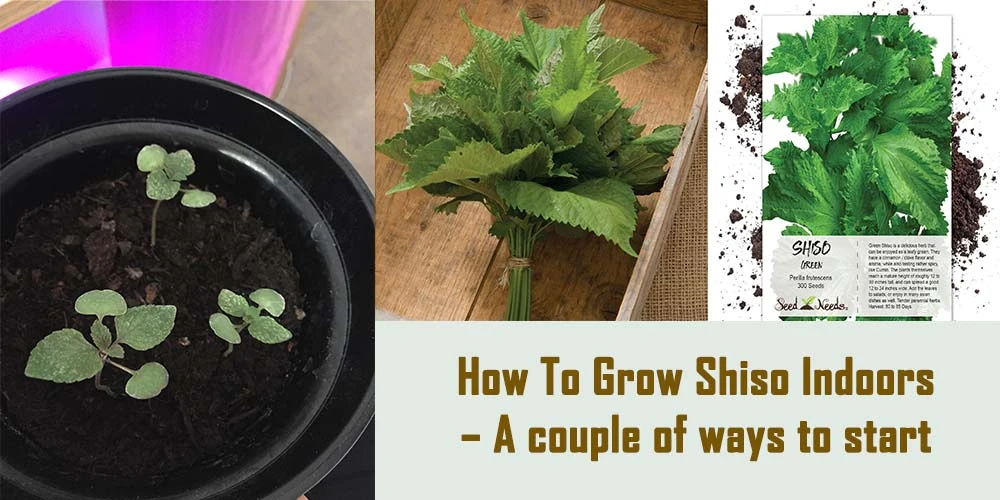
Shiso is easy enough to start from seed. Planting any seed takes more patience before you see results. It can be well worth your efforts knowing the plant’s health during every stage of its growth. I use seed and cuttings for growing shiso and find both works very well.
Cuttings are another great way to start and propagate existing shiso plants. Although the roots take some time to form, you still enjoy the greenery while developing.
Nurseries can be a source for many already developing young herb plants to bring home. I have not yet found shiso in a local nursery here as it is not a commonly grown herb. I have seen young plants in an Asian market. Sourcing the internet, you may find good quality starter plants of shiso.
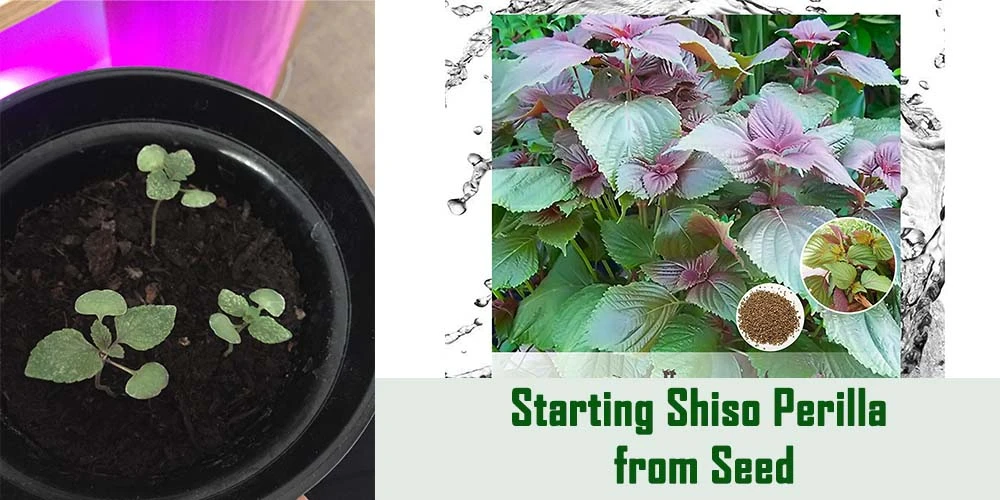
Shiso seeds will take anywhere from 7 to 30 days to germinate, so you will need to have a little patience. I highly suggest a seedling heat mat or germination tray get them started right and have the best shot at successful germination.
⇒ I reviewed a germination tray previously here if you require one to use. They are always an excellent option to have around and can be used in many seed starting applications.
Make sure your seeds came from a reliable source as well; you do not want to put in a lot of time and effort only to find your seeds were not viable.
⇒ My shiso plants were grown from seeds purchased here.

Shiso plant will tolerate low light and partial shade in your home but as your new seedlings develop it is best to give them more light energy to build a healthy plant start.
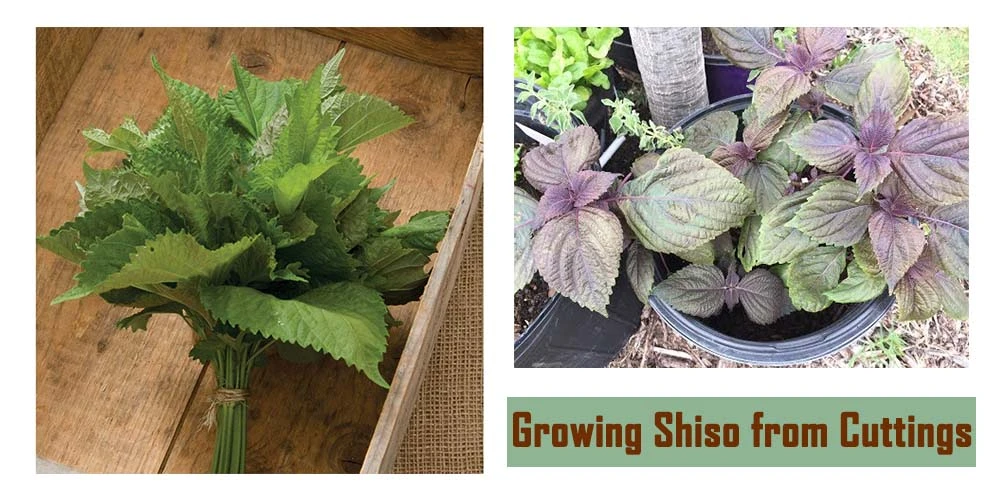
I will share a lovely video made by Khang Starr on YouTube that makes a beautiful demonstration of taking store-bought shiso and rooting them easily in water. Shiso roots very quickly from cuttings as long as you can get a healthy piece of plant, or you can even propagate one of your own in the future.
The only caution I would add after watching this video is that direct tap water may not be suitable for you if you have a municipal water supply. These can be chemically treated and would need to sit at least 24 hours before being used for this or watering your plants.
I also would let at least an inch or more root growth before planting them in the soil so more firmly developed the roots. That is my preference, and I have had more success that way. Shiso also does excellent in hydroponics as well instead of soil and a great way to transition cuttings. You can learn more about growing herbs hydroponically here in an article previously posted on this site.
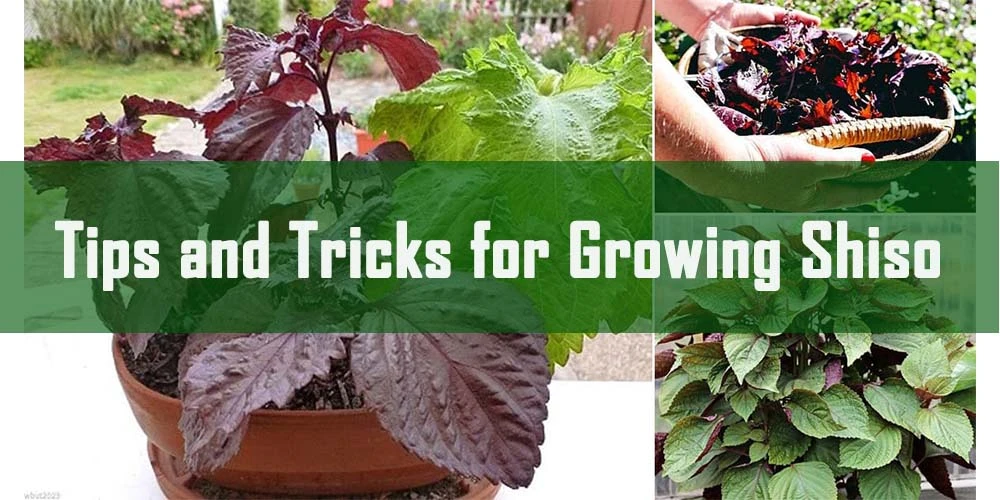
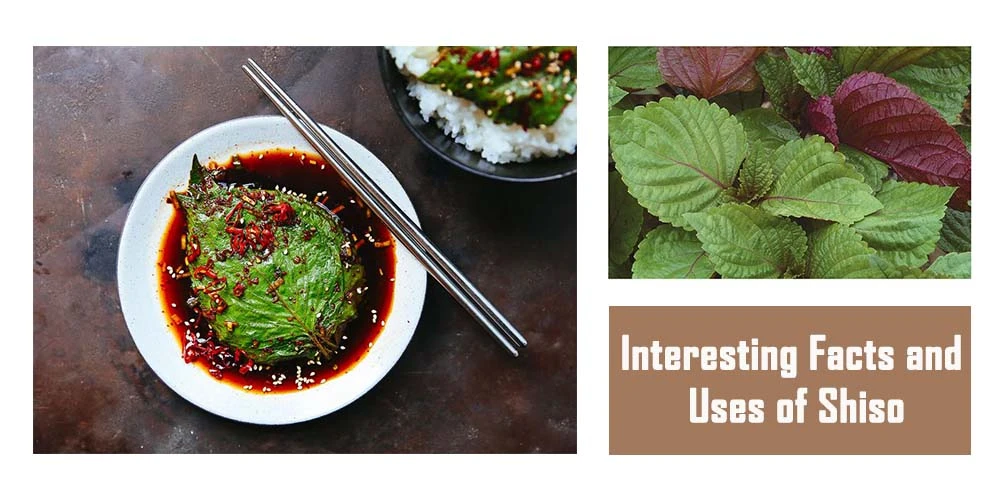
In Japan, the leaves and flowers are used in culinary dishes, and seeds from the flower heads are used to make edible oil. Often the red leaves of shiso are used in pickling, such as pickled plums, also called umeboshi. At the same time, green leaves are used raw in tofu or noodles.
It is also a herb considered valuable in traditional Chinese medicine. The perilla leaf is rich in carotene and various other essential minerals, including calcium, iron, magnesium, potassium, and zinc. Vitamins B1, B2, B6, C, E, and K are also among the healthy attributes of this unique herb.
I like to experiment when I cook, so besides using shiso in Asian dishes, I also want to put it pesto either alone or blended with basil. I enjoy the red shiso in bean soups and cooked with cabbage. Having your herbs at easy reach is one of the great ways to experiment and find new ways to cook old dishes or make new ones.
One of the most interesting facts about perilla is its known to have strong anti-bacterial effects and prevents and treats food poisoning and other digestive irritation like indigestion. In traditional Chinese medicine, shiso has also been used to treat coughs and other cold symptoms.
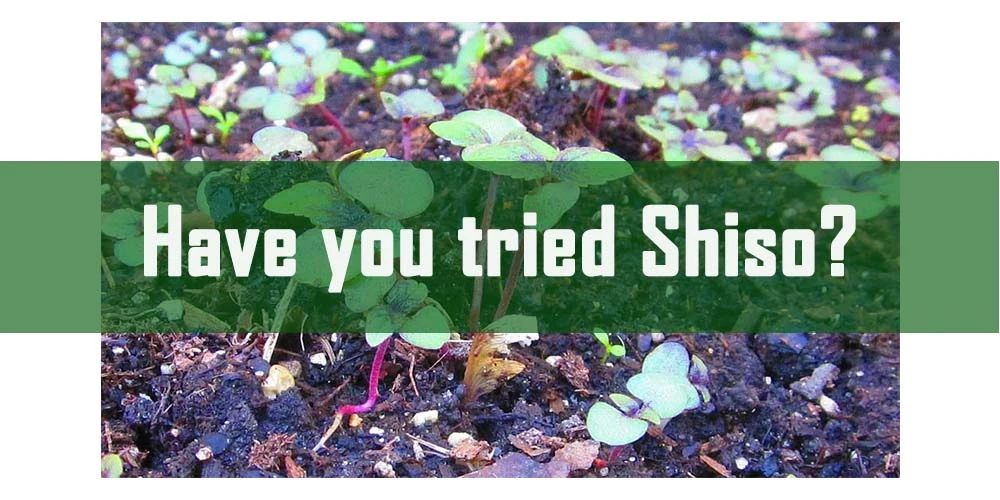
Maybe you have tried shiso and did not know it. Shiso is often used in tempura and many other Japanese dishes. Perhaps you have sat in an Asian restaurant trying to figure out what that herb or seasoning was and could not quite place it. It could have been shiso!
I hope you will give the beefsteak plant a place in your herbal garden. It makes a beautiful addition to your indoor herb garden and gives you something new to talk about with your guests.
Let me know how it goes and if you have any questions about growing shiso indoors or any other herb or plant I can help with. Leave a comment below!
Happy Gardening!
 |
 |
 |
 |

About Truman Perkins
Truman Perkins is a Detroit-based SEO consultant who's been in the business for over a decade. He got his start helping friends and clients get their websites off the ground, and he continues to do so today. In his free time, Truman enjoys learning and writing about gardening - something he believes is a natural stress reliever. He lives with his wife, Jenny, and their twins in Detroit.
 |
 |
 |
 |
Get new FREE Gifts. Or latest free growing e-books from our latest works.
Disable Ad block to reveal all the links. Once done, hit a button below
 |
 |
 |
 |